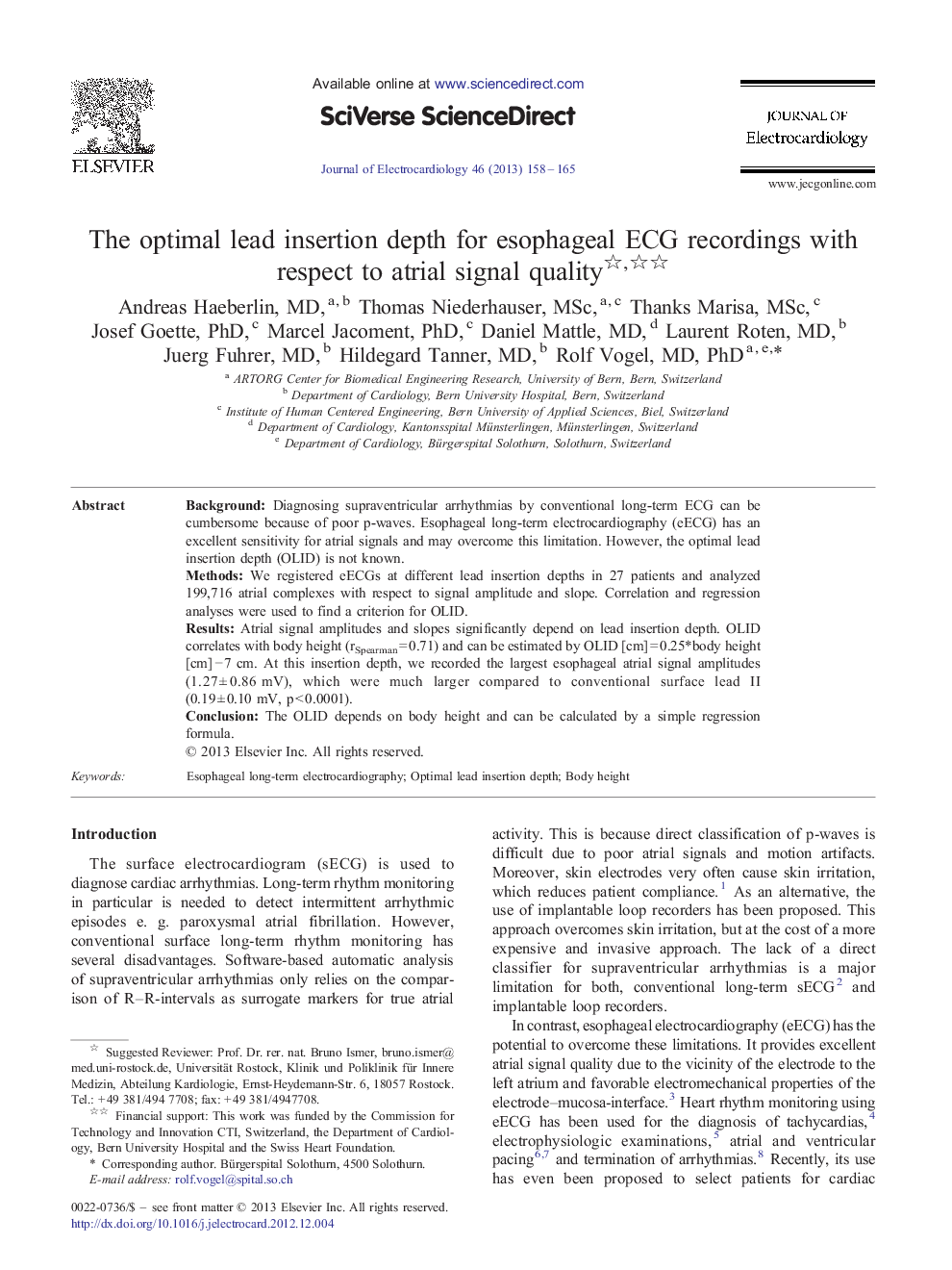| Article ID | Journal | Published Year | Pages | File Type |
|---|---|---|---|---|
| 2967787 | Journal of Electrocardiology | 2013 | 8 Pages |
BackgroundDiagnosing supraventricular arrhythmias by conventional long-term ECG can be cumbersome because of poor p-waves. Esophageal long-term electrocardiography (eECG) has an excellent sensitivity for atrial signals and may overcome this limitation. However, the optimal lead insertion depth (OLID) is not known.MethodsWe registered eECGs at different lead insertion depths in 27 patients and analyzed 199,716 atrial complexes with respect to signal amplitude and slope. Correlation and regression analyses were used to find a criterion for OLID.ResultsAtrial signal amplitudes and slopes significantly depend on lead insertion depth. OLID correlates with body height (rSpearman = 0.71) and can be estimated by OLID [cm] = 0.25*body height[cm] − 7 cm. At this insertion depth, we recorded the largest esophageal atrial signal amplitudes (1.27 ± 0.86 mV), which were much larger compared to conventional surface lead II (0.19 ± 0.10 mV, p < 0.0001).ConclusionThe OLID depends on body height and can be calculated by a simple regression formula.
